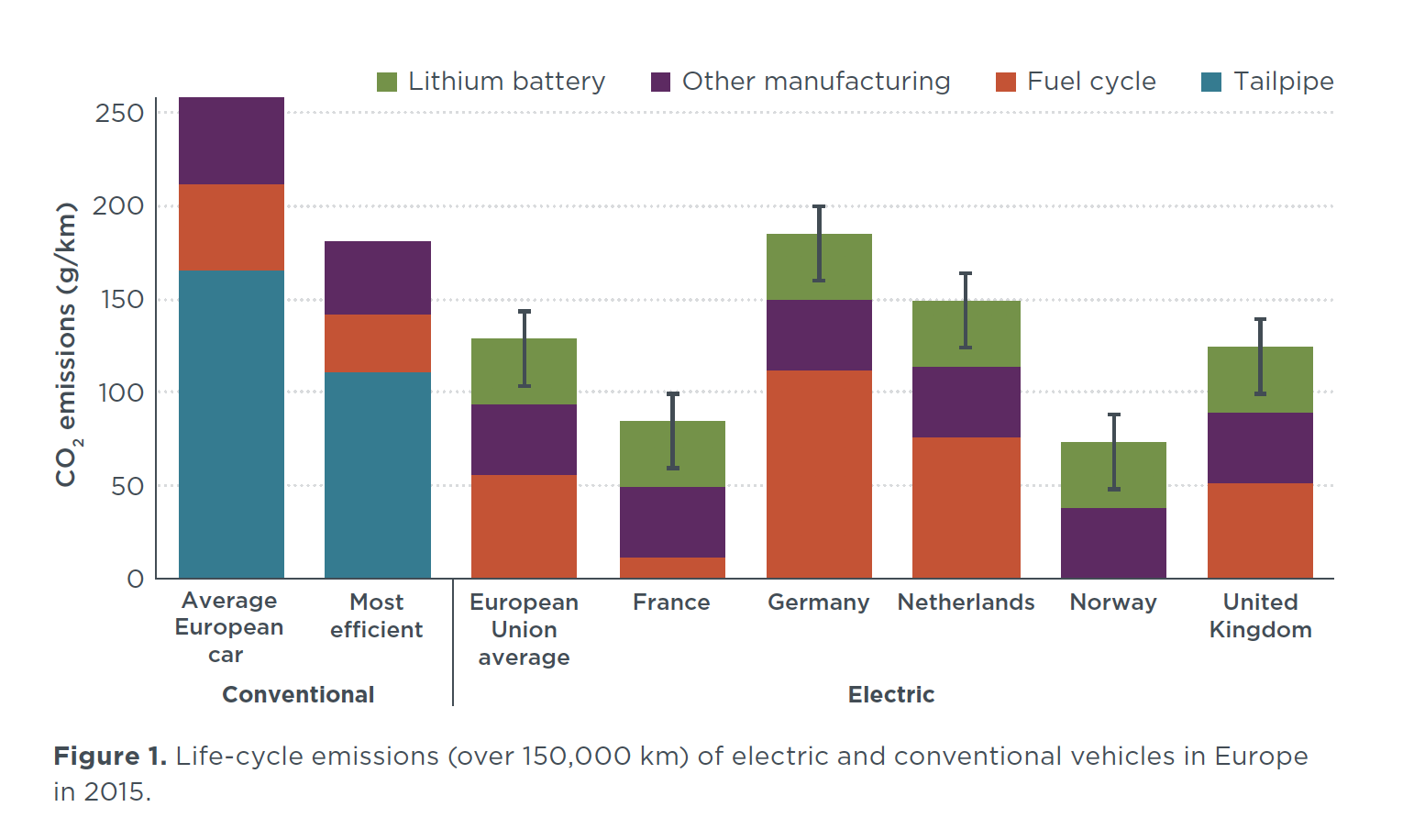Integrating electric vehicles within U.S. and European efficiency regulations
Briefing
Effects of battery manufacturing on electric vehicle life-cycle greenhouse gas emissions
This briefing reviews recent research regarding greenhouse gas emissions from the manufacturing of lithium-ion batteries for electric vehicles. We analyze this research in the overall context of life-cycle emissions of electric cars as compared to conventional internal combustion vehicles in Europe. Finally, we discuss the primary drivers of battery manufacturing emissions and how these emissions could be further mitigated in the future.
Electric cars are much cleaner than internal combustion engine cars over their lifetime. We find that a typical electric car today produces just half of the greenhouse gas emissions of an average European passenger car. Furthermore, an electric car using average European electricity is almost 30% cleaner over its life cycle compared to even the most efficient internal combustion engine vehicle on the market today. Plug-in hybrid vehicles, when driven on electric power for most trips, have lifecycle emissions similar to battery electric vehicles. In markets with very low-carbon electricity, such as Norway or France, electric vehicles produce less than a third of the life-cycle emissions of an average combustion-engine vehicle. This finding bolsters governments’ goals to promote electric cars as part of their decarbonization strategies.
Battery manufacturing life-cycle emissions debt is quickly paid off. An electric vehicle’s higher emissions during the manufacturing stage are paid off after only 2 years compared to driving an average conventional vehicle, a time frame that drops to about one and a half years if the car is charged using renewable energy. Approximately half of a battery’s emissions come from electricity used in the manufacturing process. Battery manufacturing emissions appear to be of similar magnitude to the manufacturing of an average internal combustion engine vehicle, or approximately a quarter of an electric car’s lifetime emissions. However, recent estimates of battery manufacturing emissions vary by a factor of 10, indicating the need for additional research in this field.
Grid decarbonization offers a significant opportunity to reduce the impact of battery manufacturing. The emissions from battery manufacturing are likely to decline significantly in coming decades, especially with the use of cleaner electricity throughout the production cycle. A 30% decrease in grid carbon intensity would reduce emissions from the battery production chain by about 17%, in addition to even greater savings in the use phase. Use of recycled materials and alternative battery chemistries could also reduce emissions in the manufacturing phase. Even as electric vehicles use larger batteries to allow longer electric-range travel, these and other improvements will further increase electric cars’ life-cycle advantage over internal combustion engine vehicles.
Incorporating electric vehicle life-cycle manufacturing emissions into vehicle regulations would be misguided. Scrutiny on electric vehicle battery impacts has been warranted; however, the benefits of electric vehicles compared to internal combustion vehicles are clear and growing, despite imperfect data availability on the processes of vehicle manufacturing. Following our investigation into the various underlying factors, we see deep problems with introducing aggregated manufacturing emissions data into otherwise well-designed vehicle CO2 and efficiency regulation. Calculating life-cycle emissions for all vehicle models would be onerous and not at all rigorous. Any such policy would need to include manufacturing emissions for all conventional vehicle components, in addition to batteries, so as not to unfairly penalize electric vehicles. Of course, governments can continue to simultaneously reduce upstream and vehicle use emissions with separate policies for recycling, battery second use, grid decarbonization, and vehicle use while promoting higher electric vehicle uptake. Slowing down electric vehicle uptake to wait for a near-zero-emission grid would be incompatible with global goals to decarbonize the transport sector by 2050.

